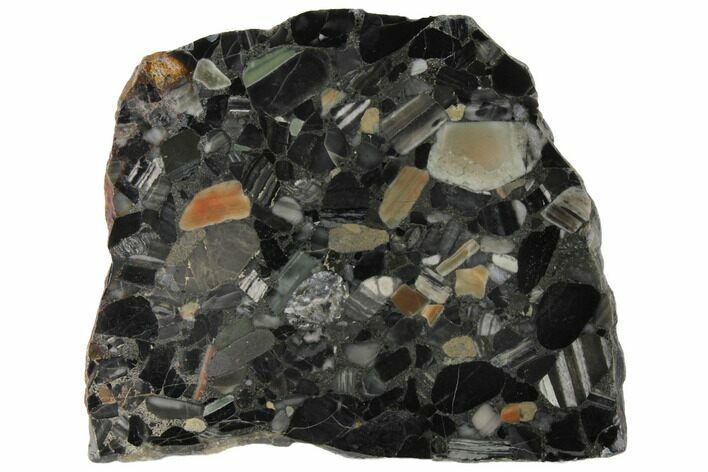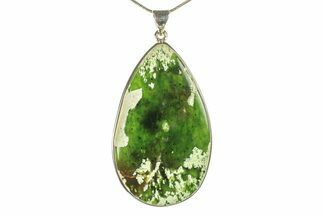This Specimen has been sold.
6.4" Polished Black Jasper Conglomerate Slab - Australia
This is a polished slab made from a black jasper conglomerate, collected from a location near Nullagine in the Pilbara Region of Western Australia. The formation of this conglomerate dates back to roughly 2,765 million years. Small pyrite crystals can be found scattered between the agate and jasper clasts.
Comes with a display stand.
Comes with a display stand.
About Jasper
Jasper is a term that can be applied to an opaque variety of chalcedony. The opaqueness is due to a higher concentration of impurities mixed with silica/quartz compared to other varieties of silica, such as quartz or agates. Like agate it may form in a wide variety of colors, and is often multi-colored. In most cases, jasper forms when silica-rich fluids permeate throughout a soft sediment or volcanic debris deposit. The fluids then crystallize around the particles/impurities, resulting in a cementation process. Most often, the impurities present determine the coloration of the deposit following solidification, but other factors can play a role in the color of what is now considered a jasper.
Jasper is a term that can be applied to an opaque variety of chalcedony. The opaqueness is due to a higher concentration of impurities mixed with silica/quartz compared to other varieties of silica, such as quartz or agates. Like agate it may form in a wide variety of colors, and is often multi-colored. In most cases, jasper forms when silica-rich fluids permeate throughout a soft sediment or volcanic debris deposit. The fluids then crystallize around the particles/impurities, resulting in a cementation process. Most often, the impurities present determine the coloration of the deposit following solidification, but other factors can play a role in the color of what is now considered a jasper.
About Agate
Agate is a variety of microcrystalline quartz (chalcedony) that displays translucence and, in some cases, banding. Agate primarily forms when silica-rich fluids fill pockets within rocks and/or fossils, depositing the silica along the walls of the rock. This process can result in banding patterns, as the compositions and impurities of these depositing fluids change over time. These banding patterns can either form as flat layers, creating linear patterns known as waterline agate, or as rounded layers, forming more common ring-like patterns. These patterns depend on the surfaces available for deposition.
Agate is a variety of microcrystalline quartz (chalcedony) that displays translucence and, in some cases, banding. Agate primarily forms when silica-rich fluids fill pockets within rocks and/or fossils, depositing the silica along the walls of the rock. This process can result in banding patterns, as the compositions and impurities of these depositing fluids change over time. These banding patterns can either form as flat layers, creating linear patterns known as waterline agate, or as rounded layers, forming more common ring-like patterns. These patterns depend on the surfaces available for deposition.
SPECIES
Chalcedony var. Jasper/Agate
LOCATION
Near Nullagine, Pilbara Region, Western Australia
SIZE
6.4 x 5.2", .3" thick
CATEGORY
ITEM
#132963
 Reviews
Reviews













